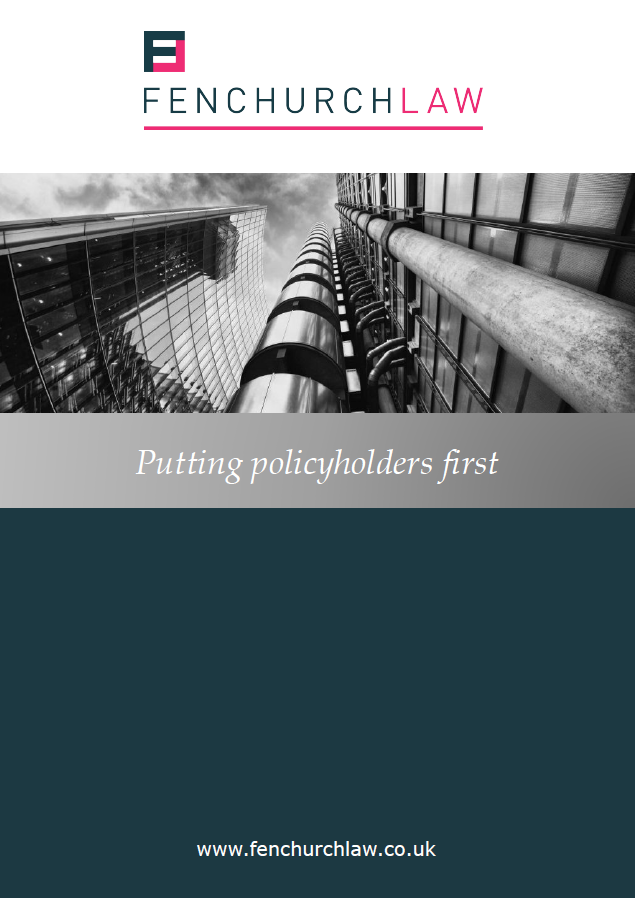
Bellini v Brit: The Court of Appeal serves up a slightly sour COVID-19 decision
Bellini (N/E) Ltd trading as Bellini v Brit UW Limited [2024] EWCA Civ 435
The Court of Appeal has handed down judgment in a case that will have significant repercussions for business interruption cover and should be on every policyholder and broker’s radar.
Non-damage endorsements commonly supplement the predominantly damage-based cover afforded by business interruption insurance policies. However, as this case demonstrates, care must be taken to ensure that the policy wording reflects the intention for the endorsement to be triggered without the need for actual damage – or the policyholder might find itself without the cover the endorsement appears to provide.
The Background
The case related to the proper interpretation of a ‘Murder, suicide or disease’ extension (the “disease clause”), as set out below:
We shall indemnify you in respect of interruption of or interference with the business caused by damage, as defined in clause 8.1, arising from:
- a) any human infectious or human contagious disease (excluding [AIDS] an outbreak of which the local authority has stipulated shall be notified to them manifested by any person whilst in the premises or within a [25] mile radius of it;
- b) murder or suicide in the premises; […]
Many similar disease clause wordings, giving cover for cases of Covid-19 at the premises or within a certain vicinity, have been the subject of litigation arising out of the pandemic.
The core issue here was, whether on a true construction of the disease clause there could be cover in the absence of damage, as defined in the policy.
At first instance, the court had held that, on the wording of the disease clause, there was no cover without damage. Our article on that decision can be found here.
The Common Ground
It was common ground between the parties that standard business interruption insurance is contingent on physical loss or damage to the insured premises or other property, but that non-damage-based cover is typically available as an extension. Such extensions may take various forms and the FCA Test Case considered a number of examples which did not require physical damage to be triggered.
It was also common ground that there had been no physical loss of or damage to the premises or property used at the premises.
It is also worth noting that it was assumed for the purposes of the preliminary issues trial that the insured was able to establish that Covid-19 was manifested either at the premises or within the 25-mile radius. It was further assumed that the premises were closed by reason of government intervention, and this intervention amounted to “interruption or interference” within the meaning of the disease clause, resulting in financial loss.
The Principles
The principles of contractual interpretation are by now a well-trodden path in recent insurance coverage disputes. The concept of “correction of mistakes by construction” was considered in East v Pantiles (Plant Hire), where the Court found that two conditions must be satisfied: “…first, there must be a clear mistake on the face of the instrument; secondly, it must be clear what correction ought to be made in order to cure the mistake. If those conditions are satisfied, then the correction is made as a matter of construction.”
The principles of contractual interpretation in the context of insurance policies were neatly summarised by the Supreme Court in the FCA Test Case: “The core principle is that an insurance policy, like any other contract, must be interpreted objectively by asking what a reasonable person, with all the background knowledge which would reasonably have been available to the parties when they entered into the contract, would have understood the language of the contract to mean. Evidence about what the parties subjectively intended or understood the contract to mean is not relevant to the court’s task.”
The Arguments
The policyholder argued that the disease clause should be understood as if the words “caused by damage, as defined by clause 8.1” were deleted. The words “in consequence of the damage“, according to the policyholder, should instead read as “in consequence of the insured perils set out above at paragraphs (a)-(e) above“. It was argued that this was the only way to make sense of the policy, and reflected how the court had interpreted the trends clause in FCA Test Case.
In addition, it argued that the words “damage, as defined in clause 8.1” made no sense on the basis that Damage was not defined in clause 8.1, which simply provided for business interruption coverage subject to certain defined provisos.
The court was invited to rewrite the policy in the most sensible way that accorded with the obvious intention of the parties (i.e. that the disease clause provided non-damage rather than damage cover).
The insurer asserted that such an approach was impermissible. They argued that it did not matter that the disease clause provided only very limited extensions of cover for disease, nor did it matter that it was hard to imagine how liability could ever arise under the disease clause on their interpretation: the parties should be held to their bargain.
The Decision
The Court of Appeal considered the well-established principles and held that it would only be permissible to rewrite the clause if something had gone wrong with the language used.
In circumstances where it was not clear that something had gone wrong, and where the clause was not ambiguous on its face, the court identified the correct approach as one that gave the clause its natural meaning – even where the end result was the provision of only limited, if any, additional cover.
In applying the principles to the facts of the case, the court considered that when objectively viewed, and taking into account the policy in its entirety, it did not provide non-damage business interruption cover as asserted by the policyholder.
The court’s reasoning can be summarised as follows:
- The standard business interruption cover clearly required damage to property. The extensions to the standard cover effectively provided cover for various things caused by physical damage;
- The same phraseology (which stated “Damage, defined in clause 8.1”) was used in most of the other extensions to the standard cover, and the reference was not a mistake, but instead made clear that the damage-based business interruption coverage in clause 8.1 was being extended to the indemnity clauses in clause 8.2;
- The policy must be interpreted as at 20 October 2019 when it incepted, and therefore cannot be interpreted through the telescope of Covid-19; and
- The fact that the disease clause provided limited additional cover does not in and of itself make it absurd. The court acknowledged that insurance policies are often somewhat repetitive and also sometimes clumsily drafted.
Comments
This judgment, while undeniably sound in its reiteration of well-established legal principles, still manages to feel particularly ugly for policyholders.
The disease clause in question, in all other respects, is a typical non-damage endorsement, and in our view should have been read as affording non-damage cover. We do not agree, as the court found, that a “reasonably informed small-business-owning policyholder” would conclude that they had only damage-based cover. Au contraire. Rather, we suggest, they would share the view of court in the FCA Test Case in finding the reference to “damage” inapposite and requiring of a wider interpretation in a non-damage context. Not least where the outcome is that the extent of cover the “extension” actually provides is so limited as to verge on being illusory.
Undoubtedly policyholders are swayed when making purchasing decisions by the idea that some policies are more extensive than others. This appeal serves as an apt reminder to policyholders and brokers that there is a real need to be alive to standard form wordings and extensions, which as this case shows, may not provide the policyholder with anything tangible.
As a parting comment, there is a theme emerging in the reporting of Covid-19 insurance disputes, including this judgment, which we find unpalatable as a concept: namely that where clauses are included automatically and no “additional” premium is paid, the policyholder is getting something it has not paid for. That cannot be right. The insurance market is not in the business in handing out “free” cover, and policyholders are not being provided with extensions free of charge. There has been and always will be a calculation of risk by insurers, for which a policyholder pays a premium and the insurer provides the end product. Free, it is not.
Authors
Joanna Grant, Managing Partner
Anthony McGeough, Senior Associate
Other news
Timing is everything – Makin v QBE and the cost of not complying with a condition precedent
3 July 2025
This recent decision from the High Court provides a powerful reminder of the consequences of not complying with a…
You may also be interested in:
Archives
Categories
- Uncategorized
- The Good, the Bad and the Ugly
- Fenchurch Law Webinars
- Stonegate
- Newsletter
- Events
- Webinars
- Comparing German and English Insurance Law – A Series
- Construction Risks
- Operations
- Business Development
- Construction & Property Risks
- News
- International Risks
- Legislation
- Financial & Professional Risks
- Case Law
- Professional Risks
- Press Release



